On June the 6th, the much anticipated Allied landing in the west had finally started. Though expected, the Wehrmacht defending the coastline from it’s Atlantic Wall fortifications hadn’t been able to fight off the offensive and brave Allied troops managed to secure the beaches of Normandy and were now pushing further into France.

Opinions of what was coming differed and because the German High Command was convinced this landing was just a diversion attack for a landing north near Pas-de-Calais, Field Marshals Von Rundstedt and Rommel were very limited in moving troops and reinforcements in to stop the Allied advance. Both knew they needed Hitlers consent and individually tried to convince him to lift the restrictions and send in reinforcements from the North of France. Too much precious time was already wasted when on June 15th Rommel, in disagreement with Von Rundstedt, sent Hitler a detailed report on the situation and the risks they were taking with their current strategy. It is presumed that this very report led to the meeting with Hitler, Rommel, Von Rundstedt and his General Staff in the main room of Bunker No. 1 at the Wolfsschlucht 2 (W2) Führerhauptquartier on Saturday June 17th 1944. It would be the only occasion for which Hitler ever visited this complex.
The construction of the W2 complex
Situated along the railway line Laon-Paris in the thick wooded area surrounding Margival, this steep sided valley proved ideal for camouflaging a large facility. Even more ideal was the fact that the railway tracks cut through a hill with a 647 metres long tunnel at a depth of 30 metres. A perfect bomb proof shelter and hideout for an entire train. Or rather, a Führersonderzug.
The Führer headquarters (FHQ) codenamed “W2” or “Wolfsschlucht 2” (meaning “Wolf Gorge”) was built between 1942 and 1944 under the supervision of Organisation Todt (OT). A tight web of protective bunkers and facilities were built spreading across the villages of Laffaux, Margival, Neuville sur Margival, Terny-Sorny, Vauxaillon, Vregny and Vuillery. The construction took around 22.000 workers and roughly 250.000 m³ of concrete to finish the job in a little over 18 months.
The headquarter’s most important bunkers, like the ones meant to house the Führer and the Army High Command were built as close to the railway tunnel as possible. The safety of the headquarters was ensured by an impressive protection zone counting 860 reinforced concrete bunkers spread out across a 6 km radius around the Wolfsschlucht. Including all facilities the total periphery of the area measured up to around 90 km²!

Bunkers in the protection zone
As mentioned above, FHQ Wolfsschlucht 2 was surrounded by an impressive web of bunkers protecting it from unwanted visitors. Many can still be found today standing in the farmlands or hidden in the foliage along the roads and hills in the countryside. You could spend a day or two alone just walking around the Wolfsschlucht 2 area spotting ww2 concrete. We dwelled in the area north of W2 for most of the afternoon (thinking the FHQ itself was closed) and followed a path down the hillside leading to the railway tunnel entrance north (see map above).


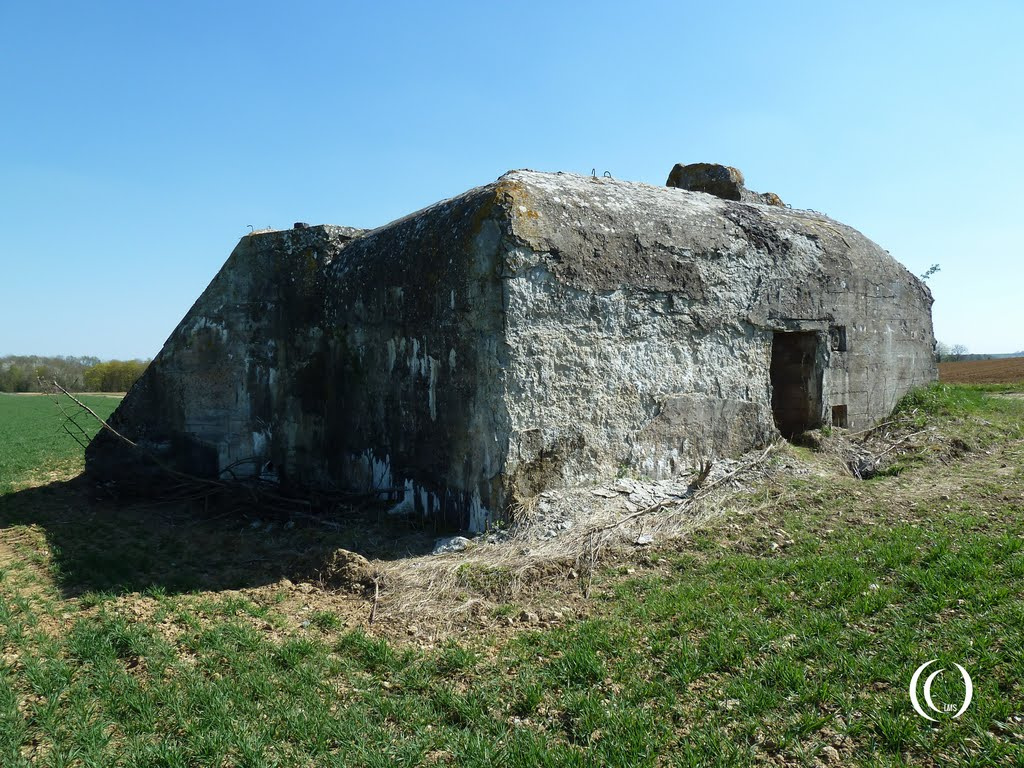
Following the Rue Principale, a country road through the farmlands leading to Neuville-sur-Margival, you can spot a couple of Schartenturms sticking out of the farmlands to the west. We were very pleased to finally have the chance to view a schartenturm partly covered with its original concrete camouflage.
If you want to walk up to them, be careful. You are entering someone’s farmland, so don’t damage the vegetation and stay on the tractor paths.



It seems that somewhere between 2007 and our visit in april 2013, someone took off the sealing valves of the MG portholes, as they are still present on the pictures of bunkerfotos.nl




The Railway tunnel
When the D537 transfers into the Rue Principale, you will have reached a fork in the road. Follow the small trail north (Dessus le Marais de Haute) going down the hillside into the forest. You will see some caves in the limestone to your right when descending until the path swings to the left with a hairpin. Look for an open spot in the trees to your left and you will find the north side of the railway tunnel entrance.
This tunnel is far from the same version dating from 1944. When Organisation Todt started the Wolfsschlucht 2 construction, the tunnel interior was reinforced and 4 heavy blast doors on suspended rails were installed at 80 and 120 metres from each end. Ventilation shafts and water supply points were also installed.
In 1972 the tunnel was again reinforced with concrete in accordance with stronger regulations, including the tunnel entrances, swallowing the blast doors. Also the railway was reduced to a single track.


The Emergency Power station
On the other side of the road you will find the Emergency Power station. Look closely because it is kind of hidden in the hillside, but the rusted wired fence gives it away. Follow the trail a little more downhill and you will find the gate of the fence open (well it was open when we were there).


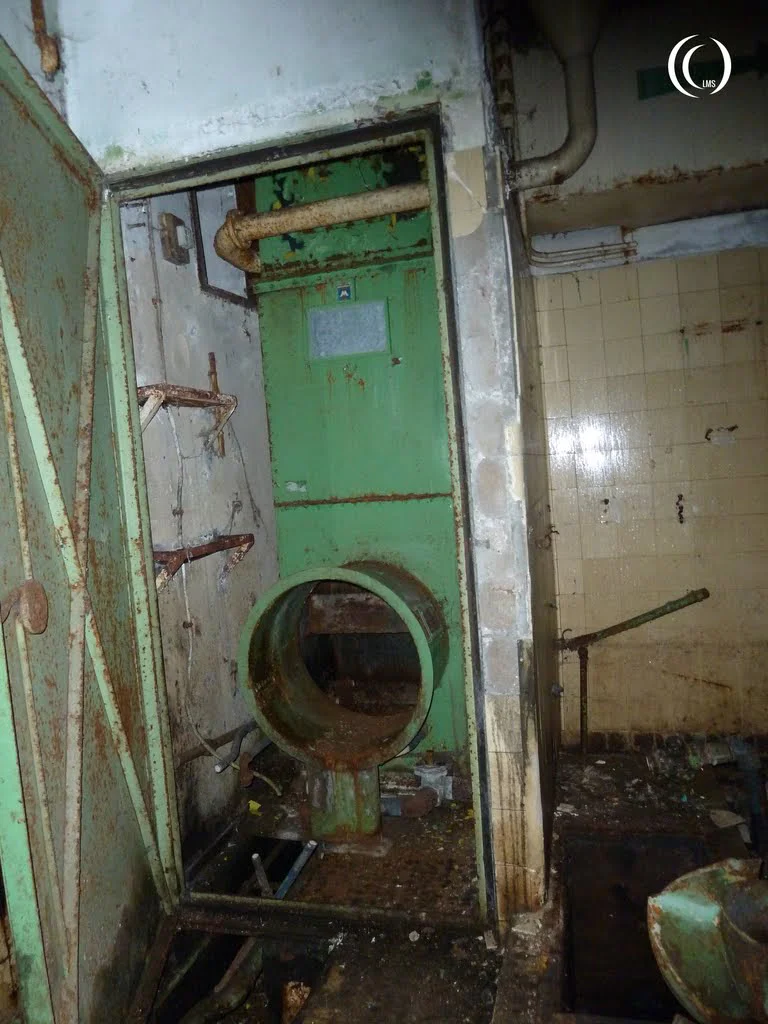


Entering Wolfsschlucht 2 (and meeting Thierry)
Before we planned to visit this site we heard that Wolfsschlucht 2 was closed to the public and could only be visited by an arranged tour. Regulations seemed to be very strict and a visit would even involve permission from the local mayor! Through facebook we found the ASW2 organisation and tried to contact them about the possibilities for a guided tour, but this was without success. The problem seemed to be the language barrier, as the organisation is French speaking. We decided to take our chances and visit anyway to see what we would find.
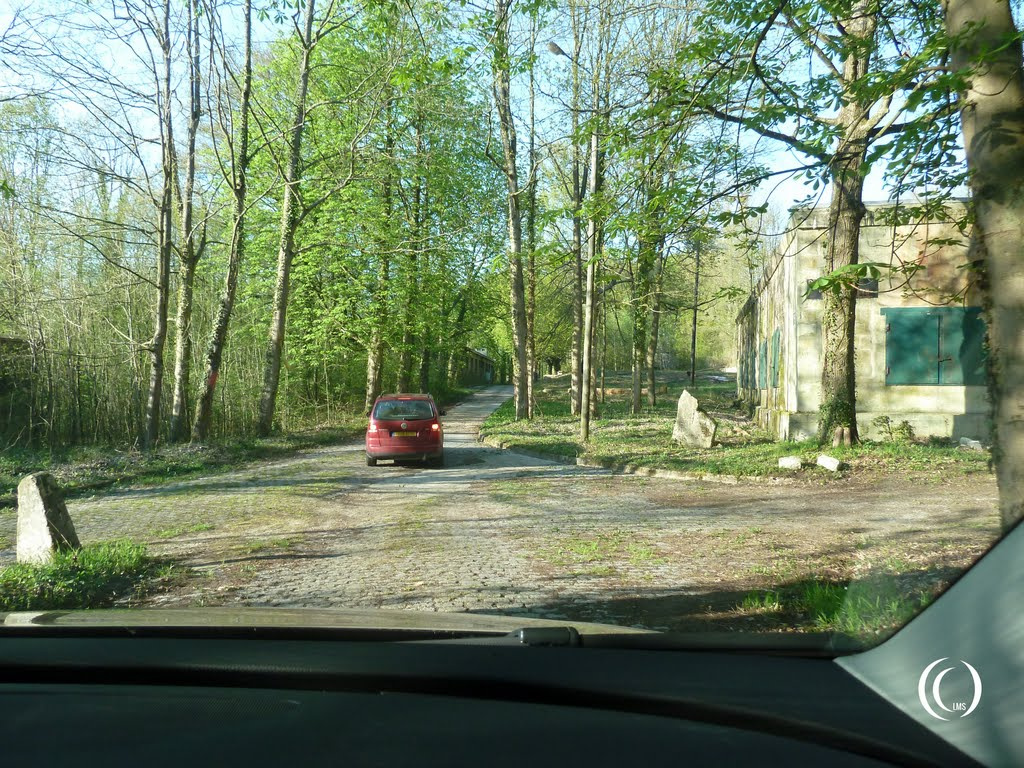
Wandering around the countryside surrounding the Wolfsschlucht 2 all day photographing bunkers had made us tired and we decided to call it a day and try our luck entering Wolfsschlucht the next day. But not before we took a peak at the entrance gate near Margival. And what do you know? The gate was open!
This was a chance we couldn’t pass up, it might be closed tomorrow, so we decided to enter. We were wildly clicking away with our hungry camera’s, ignoring all the warning and “access forbidden” signs and just as I see Patrick exiting the “Loano” bunker a car comes driving towards us and pulls over. We are caught red handed.
The driver opens the window and asks us what we are doing here in French. I manage to tell him we are visitors who would like to take some pictures in half English, half French. His expression changes at once and he asks me if I would like to see the “Führerbunker”.. in English. Well, would we!! As it turns out, the friendly man is Thierry Depret (also the chairman of ASW2), and was just about to go home and close the gate. His wife is making supper, but if we hurry, he can give us a quick tour! We literally ran to the car and followed him.



The bunkers of Wolfsschlucht 2 have both numbers and names to identify them by. The numbers were given by the Germans during WW2 and the names were assigned later when the site became a NATO base during the cold war.





After the Loano bunker the road splits in two. The right hand way goes up the hill. It is this road that leads to the heart of the Wolfsschlucht 2 complex. My guess is the left way leads you to the railway tunnel entrance at the bottom of the gorge and the bunkers on the Neuville side, but we never got a chance to check that out.
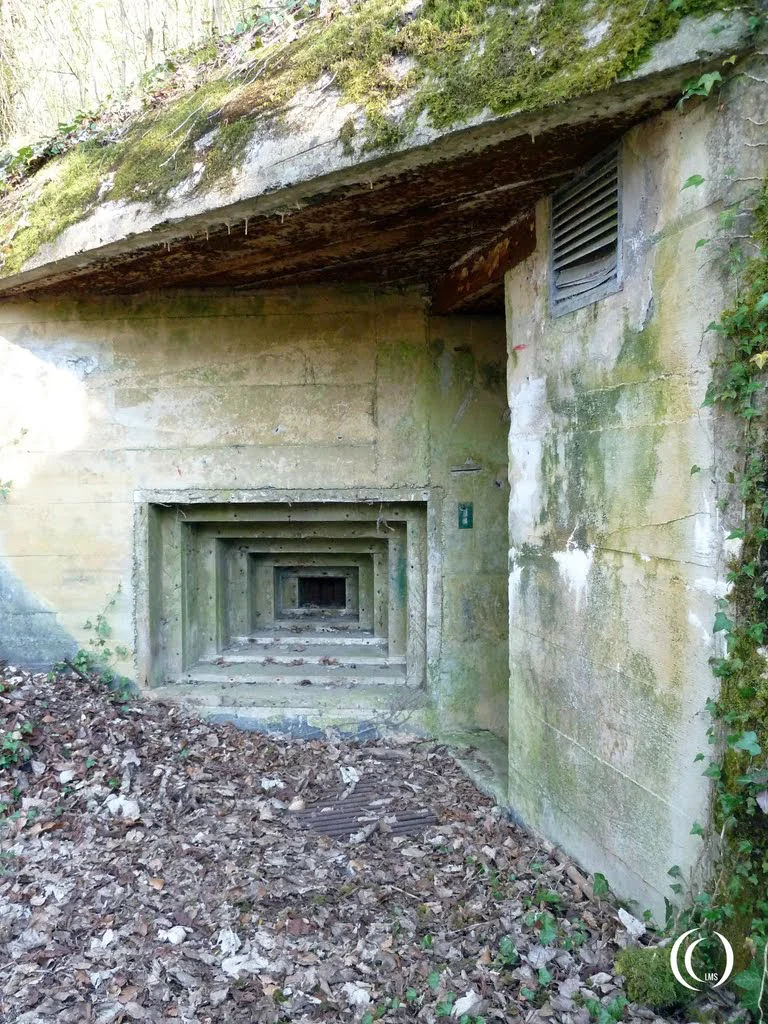




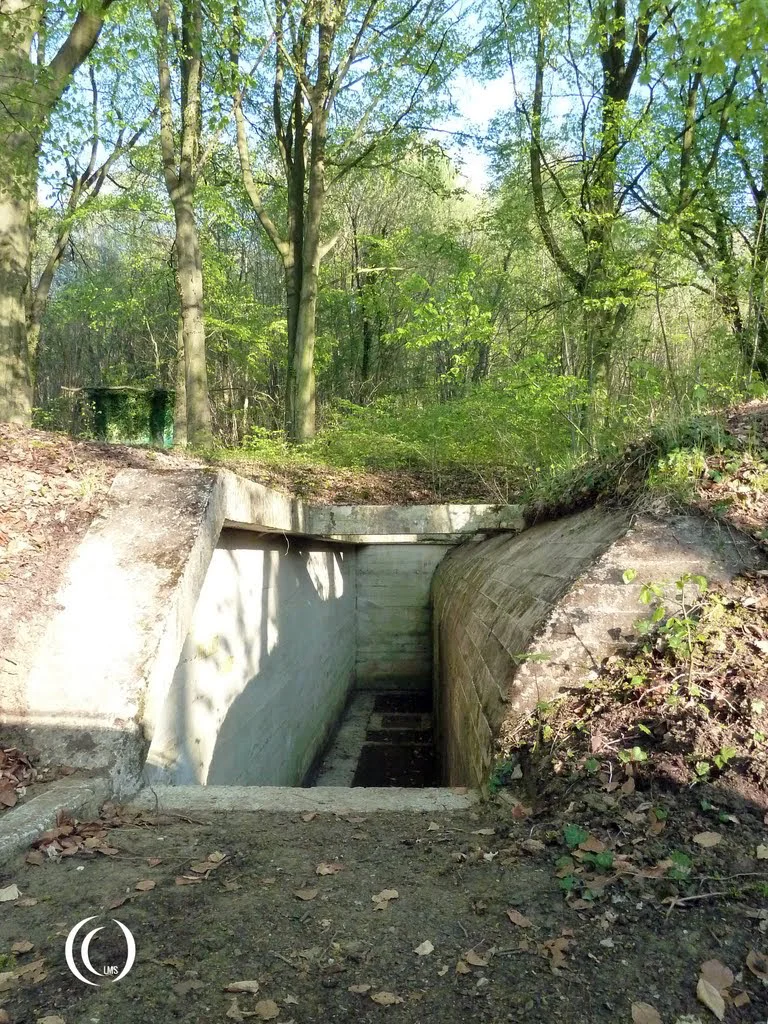
The ASW2 Association
Eventually we stopped at the T-section where the road leading from the Margival entrance meets the one leading from the Laffaux end. This is also where the most important buildings of the complex are situated. Thierry takes us to bunker 019 (or “Berezina” in cold war terms) and shows us the ASW2 association clubhouse. They have a lot of interesting items and information about the complex on display and even a well made maquette of the Wolfsschlucht 2 headquarters.
Thierry had no problems with us taking photographs while he answered our questions and he even gave us a beer and the ASW2 tour guide magazine for free! Now if you want to make friends with Dutch guys, give them something for free. And if you want to make friends for life, give us free beer. Merci beaucoup Thierry!


Bunker 005 – Communications Centre
Being 108 metres long, it is presumed to be the largest FHQ communications bunker built in ww2. The bunker is composed out of two separate sections across its full length; an office building accessible from the main road and a large heavy anti-aircraft bunker at the backside, providing shelter for the personnel in case of an air raid. In order to continue their work, the two sections were equipped with duplicate transmission installations and extra facilities, like four electric power stations, a gas filtration system, running water, central heating and a sewage system to make the bunker fully operational and self-sufficient during an attack. The bunker had more than 600 telephone lines, including a direct line with Berlin.

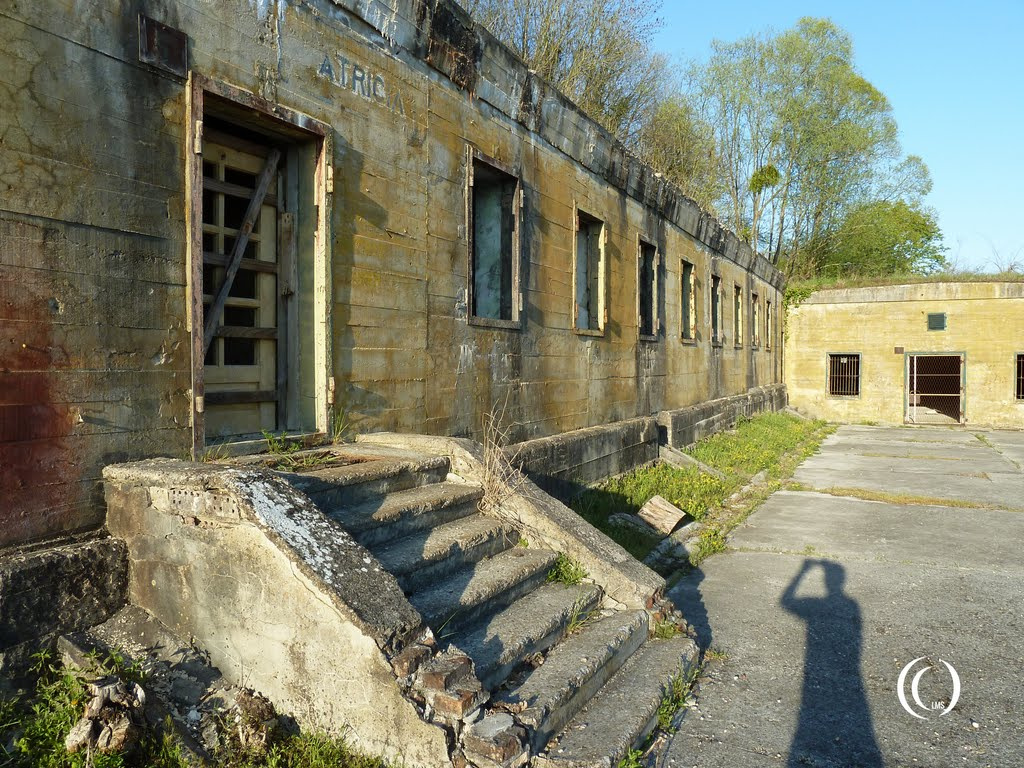


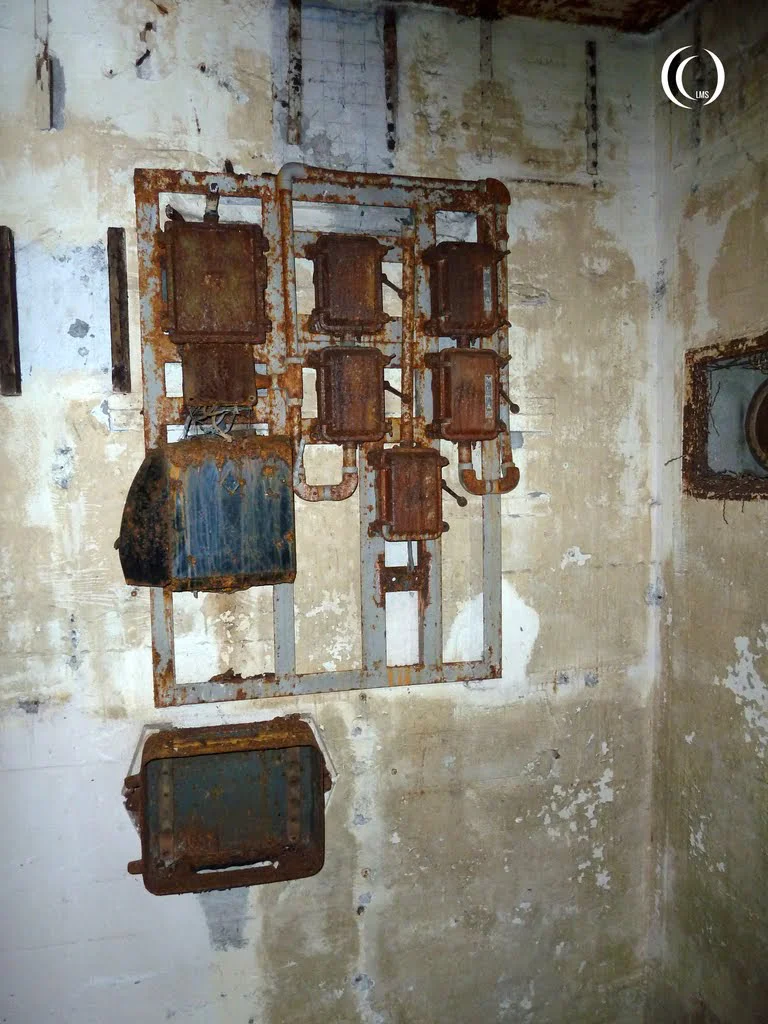
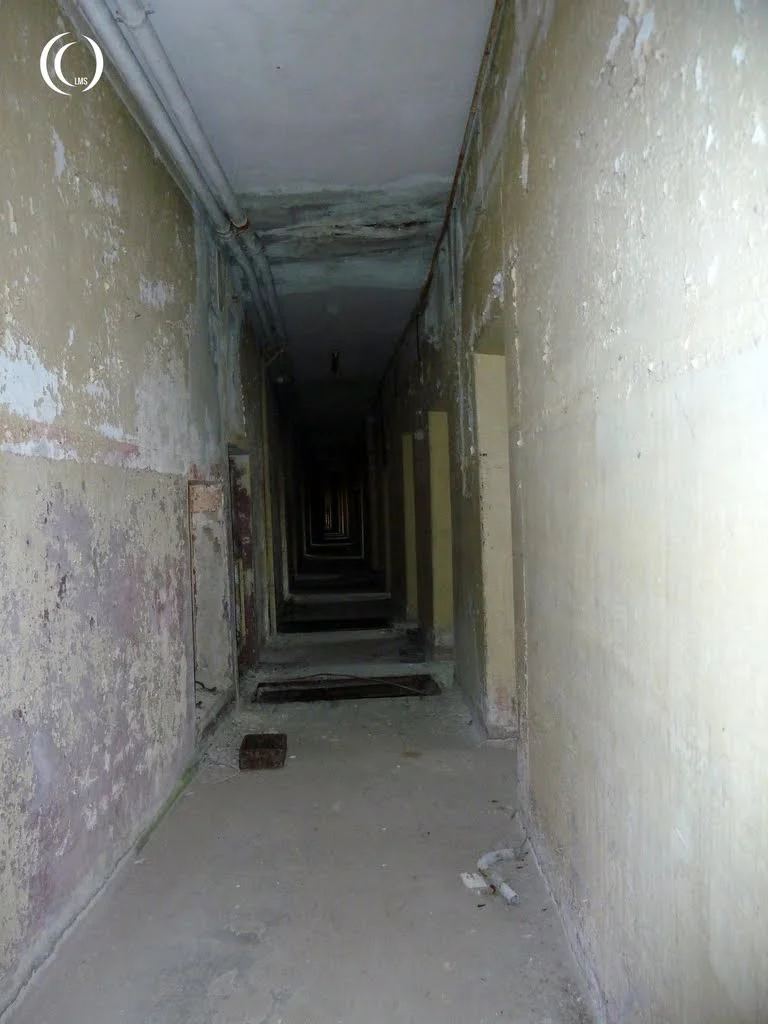
The concrete road passing bunker 005 leads towards the railway track. The crossing is closed with a large fence, but you can look to the right and see the tunnel entrance. There is a small guard post, but this might not originally be one dating from ww2.
Turn to your right and follow the path uphill, parallel to the railway track. It will lead you to bunker 001.
Bunker 001 – The Führer bunker
Finally we reach bunker 001, the so-called “Führer bunker” where the meeting between Hitler, Rommel and Von Rundstedt took place on June 17th 1944.
The bunker is situated very close to the railway tunnel entrance (Margival), although to reach the tracks you have to follow the path downhill. It is obvious that the OT architects tried to give the concrete building more grandeur to welcome the Führer and his aides-de-camp by installing a large main entrance with two columns and three double doors. The building consists of a large main work room, a kitchen, a private apartment with a bathroom and several offices and bathrooms for staff and secretaries. In the main work room there was a large fireplace with a bas relief depicting Napoleon on horseback. A picture of the fireplace can be seen at the top of this post.
Attached to the bunker behind the main room there was an air raid shelter which also holds several rooms and toilets. It is remarkable that there is no additional protection, like most of the W2 command bunkers have, indicating that the constructors anticipated accommodating a short stay only. Which is exactly what turned out to be necessary.
The railway tunnel located downhill was reconstructed to hide the Führersonderzug from view and the threat of an air raid. A switching station made sure that one of both tracks leading through the tunnel could be used for military traffic at all times. However, because Hitler came to the Wolfsschlucht 2 by armoured car in 1944, the tunnel was never used for this purpose.
.






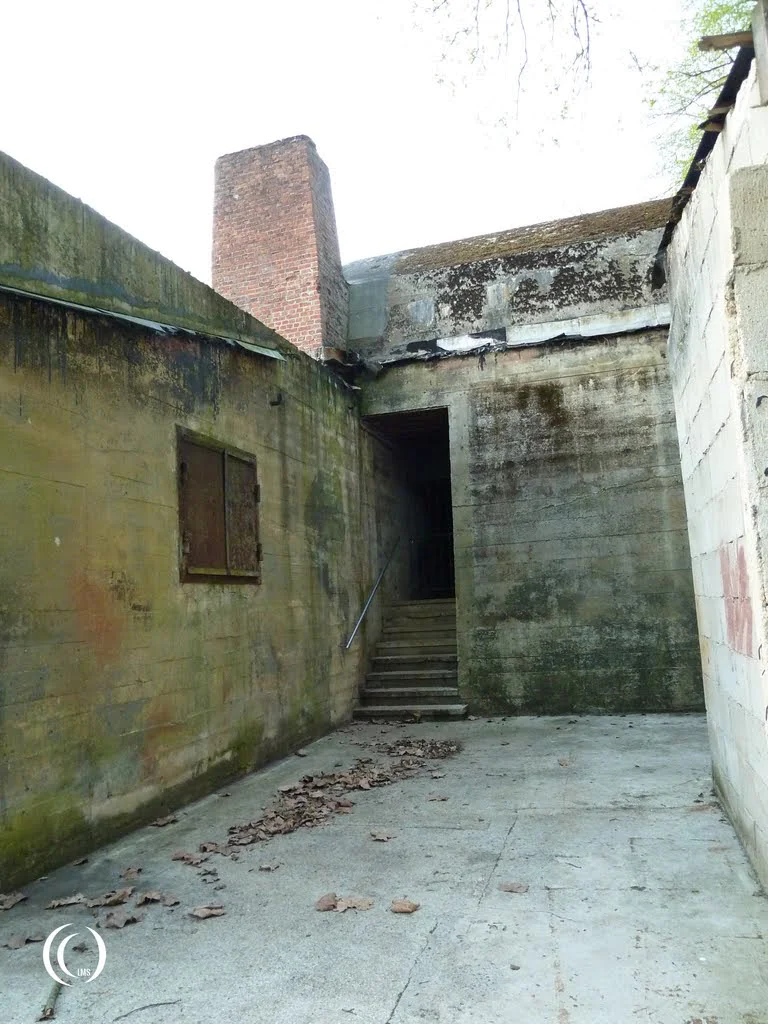


Bunker 002 – The OKW bunker
This enormous bunker was meant for the general staff of the German Armed Forces, but Keitl and Jodl never set foot in the building. Wolfsschlucht 2 became an important transmission centre for the German Western front. Field Marshal Walter Model, replacing the command of Von Kluge (who had replaced Von Rundstedt) and Rommel, set up his new headquarters at the Wolfsschlucht 2 on 18 August 1944, together with his head of staff General Hans Speidel. From here he planned his strategy to prevent the Allies from crossing the Seine. He spent 9 days at W2 regrouping troops and setting up a new defenceline.
The Wolfsschlucht 2 defences were incorporated in the new “Kitzinger” defenceline, though Model did not receive permission to also incorporate the elite troops stationed at the Wolfsschlucht 2.




The Chalet
Following a trail leading past bunker 001 to the right we arrive at an open space right above it. According to Thierry, this is where the famous “chalet” must have stood, where everyone at the meeting of 17 June had a meal. It is supposed to be one of the first buildings of Wolfsschlucht 2, but this is based on pictures dating from 1942 showing the chalet without the surrounding bunkers. It is assumed that the engineers reconstructing the tunnel used it as their living quarters. The chalet was taken down somewhere during the 1980’s.

The Swimming Pool
This pool is known as the “Eva Braun” swimming pool, but it is very unlikely that she ever put one toe into the water here, or any military HQ for that matter. The pool served as a leisure area for the stationed officers and also as a water reserve.


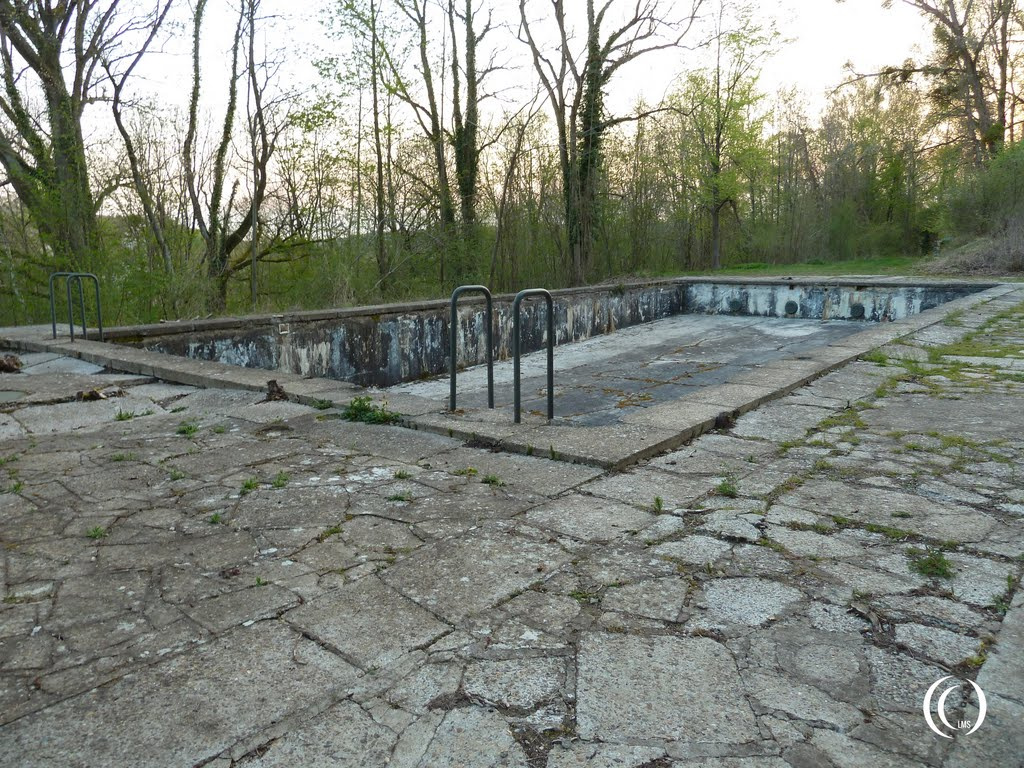
The Hotel
This is the moment where my French really let me down. Thierry was rushing us through the tour speaking more French than English, as his wife called him for the fourth time asking him when he would be home for dinner. If I understood his words correctly, this building was a hotel for foreign politicians and attaches. I don’t think it ever accomodated any known politician of that time, but correct me if I’m wrong. Thierry pointed out to us that the building has no protection or air raid shelters whatsoever.
We decided to call it a day. Thierry did invite us to come by again the next day, but unfortunately we had a very busy schedule to stick to. We will definitely come back here in the near future.

Visit
If you would like to visit Wolfsschlucht 2 headquarters, contact the ASW2 Association (Facebook). Their website http://asw2.perso.sfr.fr/ seems to be down since november 2016. Their Facebook page suggests they still give English spoken tours regularly.
First time I have seen this website. Bunker 001 was known to us in the Royal Signals as Bunker ‘B’ and was the NATO emergency standby communications centre should Paris or London be taken out with a nuclear warhead. This was in 1955 at the time of the Cold War. Our barracks were further up the track, and after we had cleaned out the swimming pool we had the use of it. The Unit was known as No.1. Independent Air Formation Signal Squadron and was a top secret location from 1951 until France left the NATO organisation, when the unit relocated to Maastricht.
Outstanding wealth of information and photos. Hitler’s plans to attack were indeed a mastermind of preparations and completion of a underworld none of us could ever imagine. Thanks for reporting and sharing.
What a great Website!
Brings back many memories as I was part of the Signal Squadron who’s HQ was at the north end of the Wolfsschlucht II complex. We used to entre from the “Rue Principale” road, down a small lane. We had a number of buildings there, headquarters, Q store, canteen, sergeants and OR’s mess, garages and a single(?) accommodation block. Great times exploring the various buildings outside the complex. This was only the administration part of the squadron, as all the Ops and Tech were at Fontainblue. It was when we moved from Fontainblue on route to Maastricht we had a “stop over” of several months. This was in late 1966 and early 1967. I was accommodated in the first building past the barrier, just down the hill near the southern tunnel entrance. Very sparse, as it had not been used in a number of years! We parked our comms vehicles near the Grossbunker, which by the way we could freely walk in. although discouraged! The Fuhrerbunker was “off limits” no doubt due to the many rumours of booby traps!! Wish I had had more time to explore and take in the history, but as a young lad, other things to do!!
Again great site, many thanks.
Hi Paul we must have met. I got there Nov 65. I remember moving to Fointainblue, some moved in with the yanks,(steak for breakfast). The rest lodged with the RAF. I remember watching the world Cup 66 there. Very friendly with the germans until we beat them.
Do you remember the drunken mess Sgt. Ever now and then he would give us steak and chips. Took me years to realise it was horsemeat.
I went to Germany from there hated it.
Jim Wales
I was stationed at Margival, 227 signal sqn ALFCE from November 1962 till May 1965. I did enjoy my stay but it was grim. NO showers at all and we all had to do duties to maintain the place. The lads where a great bunch and we did not complain. WE used block 5. the main com-centre and also block 9.
Any one else served at those times?
i was there at the same time charlie gruganas dave,when i arrived it was mostly national service guys,we did have showers but someone forgot to keep the boiler stcked up with fuel and the boiler burst,my memorys are a bit sad with BB /charlie grugan.graham sutton and the 2 in the front of the mini bus coming back fom laon after visiting ian teare in hospital.also the remememberance day parades at CHEMANE DE DAMM
Hi David
I was at Margival when you were there. It’s Mick Dale here. If I remember correctly, you had brown hair and you wore wore glasses?
I enjoyed my time there, as I used to play for a French pop group called “Les Titans”. Major Stewart was the CO and he was hot on Anglo/French relations, so I got away with all sorts of avoiding duties in order to play with the group. I married a French girl, but that, sadly, didn’t last long.
If you pick this up, my phone number is 07717 682284.
Cheers – and hope you are well.
Mick
Paid a visit to the wolfs revine 2, early this year. I must have gone through the back entrance. (No gates and no one stopping me). the first thing that i came across was the communications bunker.(which had dummies in it ) I also came across some fronts of buildings ,that appear to be facards ( false buildings ). Didnt manage to see the loano bunker or the swimming pool. the place started to fill up with, i assume officials. Still no one stopped me. The problem with contacting this organisation, is that they dont reply to you, so, as i did , just turn up, if you want to look around..
I was here as a young boy when my dad was posted to Station 10, the microwave detachment just above this site.
From 1962 to 1964 and the primary school for British children was in rue Principale, Neuville.
I visited there last week on spec to encounter a very knowledgable man called Donny who was working on Bunker 2, Zucarello.
As with all things in France, it is polite to be able to speak some of the French language and this place is astounding.
It has a wealth of history just waiting to be told.
The local region and department should make the most of this as a tourist attraction, to remind people of the recent past if nothing else.
After NATO left (forcibly) in 1966 this place was the main training school for French Commando Forces and has yet another phase of history to tell.
Well worth a detour if you are anywhere near the area, magnifique.
I was there in 227 Signals Squadron from 1964 to the end of 1965, Absolutely loved it and have wonderful memories. Would love to have contact with anyone of those magical times! Used to play bass guitar in local pop band – Les Titans – from Soissons.
Hello Mike I was also posted to 227 Sqn from Nov 1962 till Nov 1965. I was a tele tech.
Can not place you.
Dave Jennings
I STIIL LOG IN EVERY SO OFTEN,STILL HAVE GOOD MEMORYS,WHEN I FIRST ARRIVED THERE WAS 1 OFFICER,SEVERAK SENIOR NCOS AND A LOT OF N/S GUYS.BAD MEMORYS OF THE DEATHS THAT HAPPENED WITH CAR ACCIDENTS,GRAHAM SUTTON, BROADBERRY BROOK,CHARLIE GRIGAN ? WHO DIED ON THE WAY TO PARIS WITH ANOTHER GUY(NAME FORGOTTEN.ALSO I WAS IN THE MINI BUS CRASH BRIAN BOYLE AND I SLIGHT INJURYS WIILY WILSON DRIVER AND ANOTHER GUY WHO WAS LOOKING AFTER THE CANTEEN BAR AT THE TIME.
Hi Alan, I was at Margival too 1960-1963 , Ian Noble (Cpl). Revisited a few years ago & had guided tour from ASWW2 president Didier. Remember the night that BB crashed his bike & we went looking for him but sadly he died. The guy who looked after the canteen bar was, I think, Roy Warman? Was a great place until the National Service lads all left & then it got too serious thanks to Capt. Dexter & W.O. Pine, but some happy memories of French life. Would love to have those years again.
Only just found this site. My Dad was stationed here about 1950-52. He was a Sergeant in the RAF, trained at Cranwell, Radio & Signals serving from 1938-1952, when they finally let him go! He & Mum were billeted in Soissons. The 1st time they took me to Soisson ( about 1967), he took us to Margeval, only to look across the valley where the underground bunker was. There were signs everywhere, saying no photography & he couldn’t say what he did, as he was covered by the official secrets act & it was top secret work he was doing. He did say it wasn’t just RAF personel there. Your post has answered some questions, thankyou.
Sadly I lost Dad January 9th 2019…he was a lovely person.